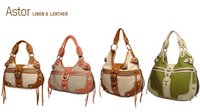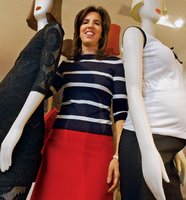


Rafe Totengco's website writes about".... In 1989, Rafe left a successful business he started in Manila to pursue his dream of a career in fashion design. He moved to New York, enrolled in FIT, and supported himself as a design assistant.
In 1994, he produced his first accessories belts and watchbands for a SoHo boutique: they sold out instantly. When the shop asked him if he had bags to go with the items, he enthusiastically said 'yes'...even if he didn't have a single
bag to show for it. One year later, the first collection of Rafe New York handbags debuted at Bergdorf Goodman.
Since then, Rafe has become one of the most acclaimed of a new generation of New York designers. He's been recognized in his field with numerous honors.
His company now includes a freestanding store in New York, three in-store shops in Japan, and distribution at department stores and boutiques throughout the U.S.
About his unusual name: Rafe is short for Ramon Felix..."
Photos Courtesy of Rafe.com and 01Shoes.com










